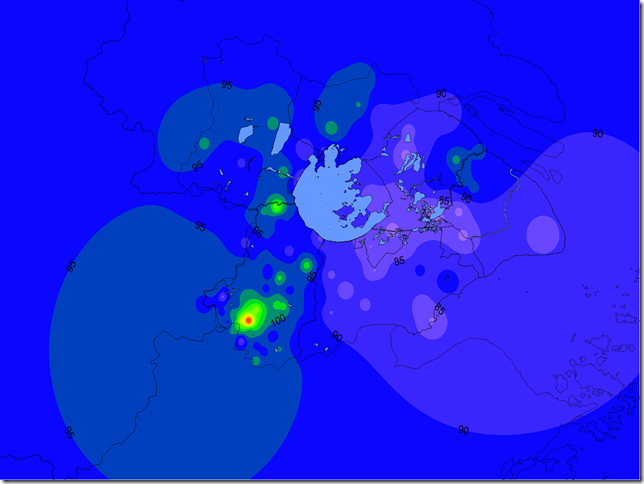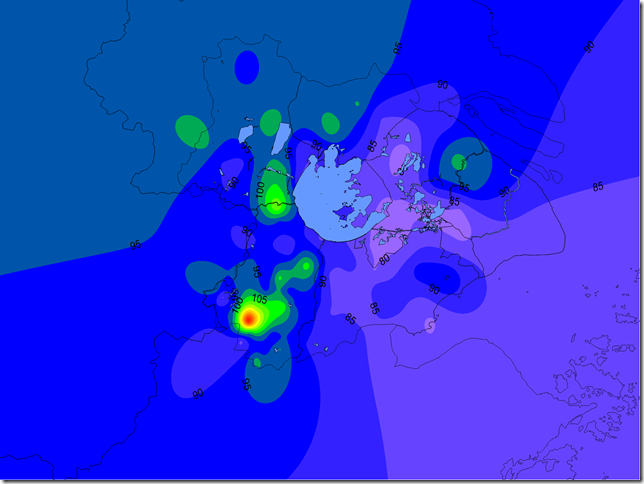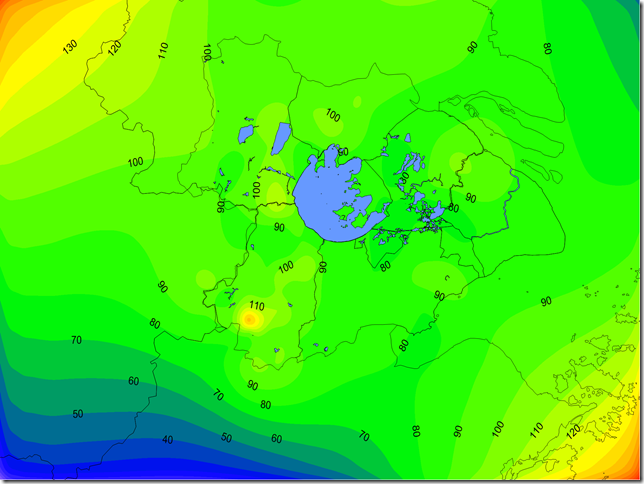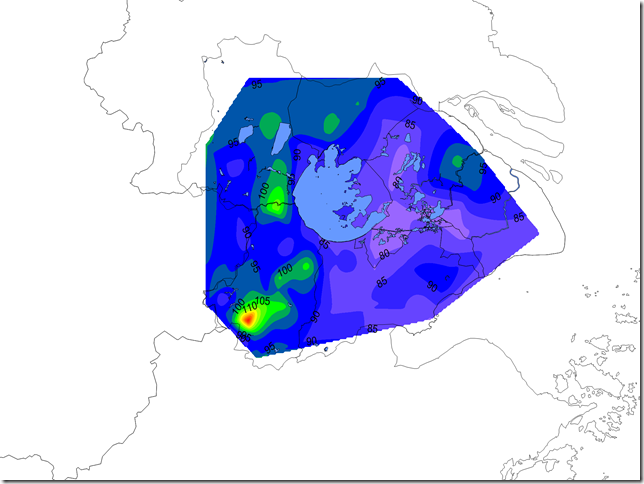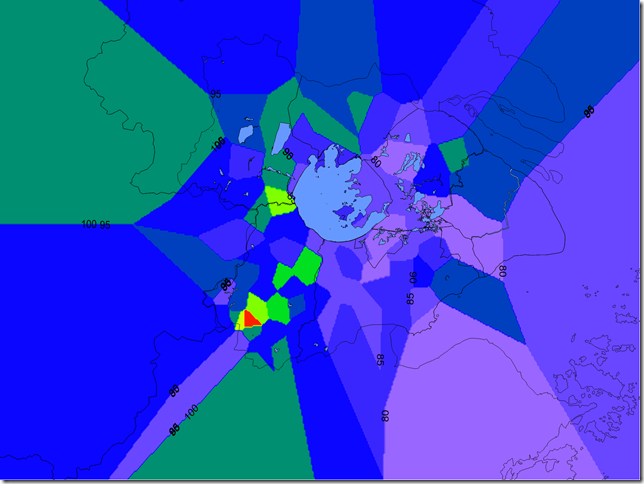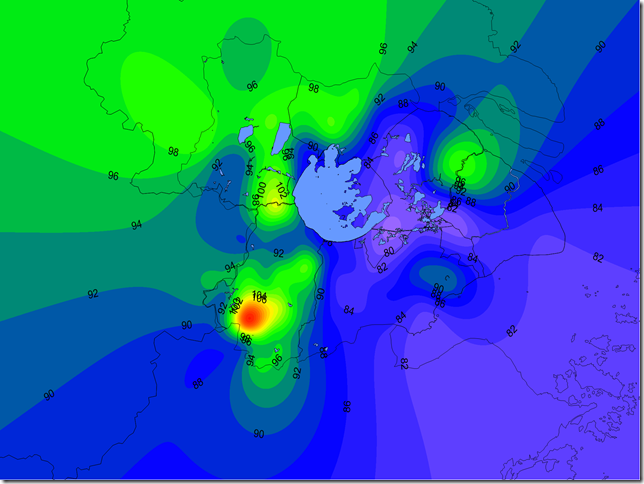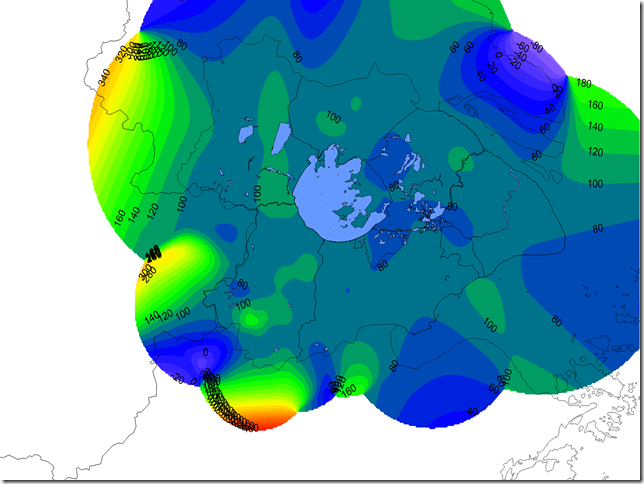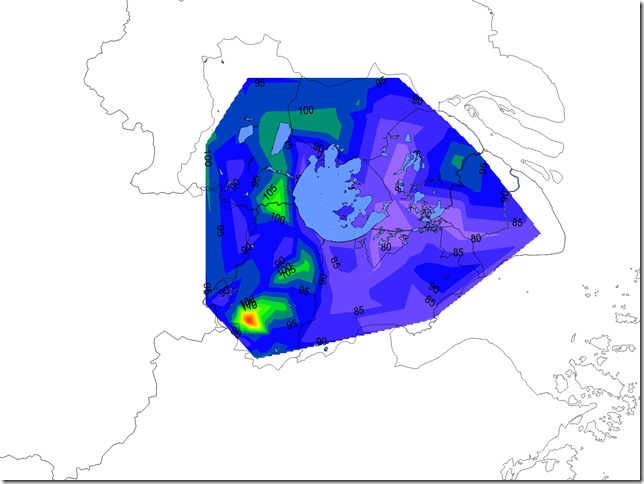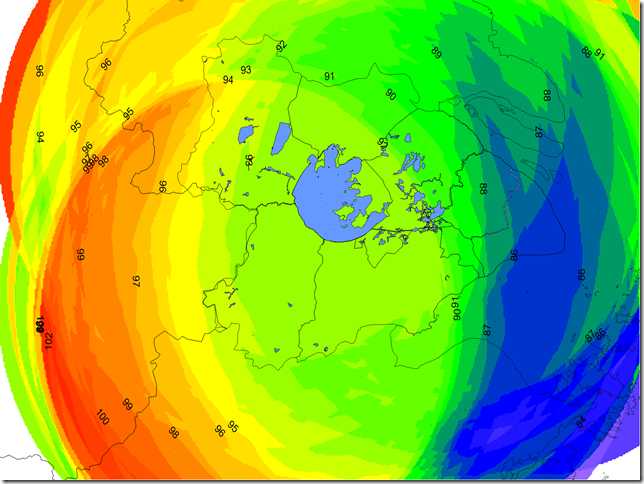Inverse Distance to a Power is fast but has the tendency to generate " bull's-eye" patterns of concentric contours around the data points. Inverse Distance to a Power does not extrapolate Z values beyond the range of data.
Kriging is one of the more flexible methods and is useful for gridding almost any type of data set. With most data sets, Kriging with the default linear variogram is quite effective. In general, we would most often recommend this method. Kriging is the default gridding method because it generates a good map for most data sets. For larger data sets, Kriging can be rather slow. Kriging can extrapolate grid values beyond your data's Z range.
Minimum Curvature generates smooth surfaces and is fast for most data sets but it can create high magnitude artifacts in areas of no data. The internal tension and boundary tension allow you control over the amount of smoothing. Minimum Curvature can extrapolate values beyond your data's Z range.
Natural Neighbor generates good contours from data sets containing dense data in some areas and sparse data in other areas. It does not generate data in areas without data. Natural Neighbor does not extrapolate Z grid values beyond the range of data.
Nearest Neighbor is useful for converting regularly spaced (or almost regularly spaced) XYZ data files to grid files. When your observations lie on a nearly complete grid with few missing holes, this method is useful for filling in the holes, or creating a grid file with the blanking value assigned to those locations where no data are present. Nearest Neighbor does not extrapolate Z grid values beyond the range of data.
Polynomial Regression processes the data so that underlying large-scale trends and patterns are shown. This is used for trend surface analysis. Polynomial Regression is very fast for any amount of data, but local details in the data are lost in the generated grid. This method can extrapolate grid values beyond your data's Z range.
Radial Basis Function is quite flexible. It compares to Kriging since it generates the best overall interpretations of most data sets. This method produces a result quite similar to Kriging.
Modified Shepard's Method is similar to Inverse Distance to a Power but does not tend to generate "bull's eye" patterns, especially when a smoothing factor is used. Modified Shepard's Method can extrapolate values beyond your data's Z range.
Triangulation with Linear Interpolation is fast. When you use small data sets, Triangulation with Linear Interpolation generates distinct triangular faces between data points. Triangulation with Linear Interpolation does not extrapolate Z values beyond the range of data.
Moving Average is most applicable to large and very large data sets (e.g. > 1,000 observations). Moving Average extracts intermediate-scale trends and variations from large, noisy data sets, and it is fast even for very large data sets. This gridding method is a reasonable alternative to Nearest Neighbor for generating grids from large, regularly spaced data sets.
Data Metrics is used to create grids of information about the data.
Local Polynomial is most applicable to data sets that are locally smooth (i.e. relatively smooth surfaces within the search neighborhoods). The computational speed of the method is not significantly affected by the size of the data set.
